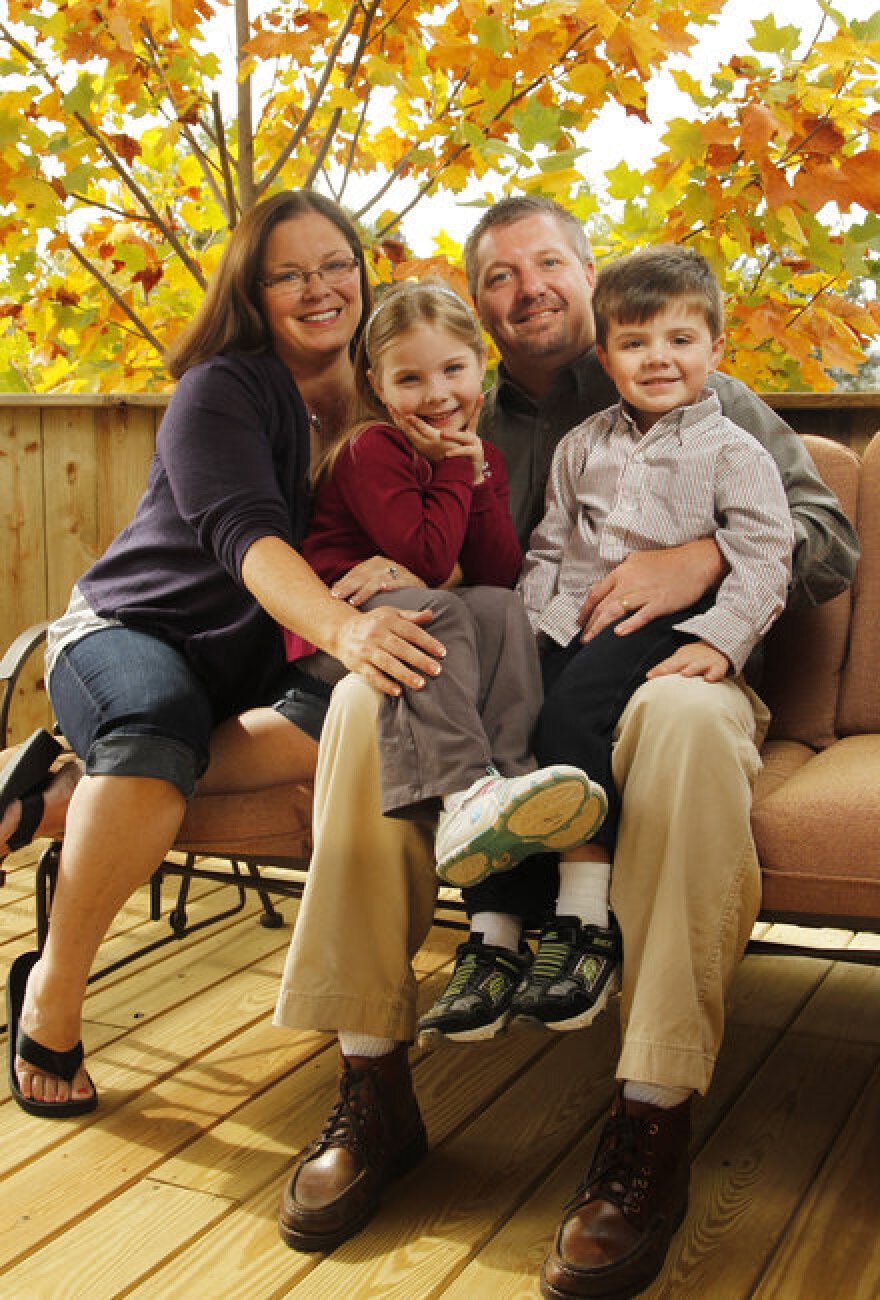Kentucky child, Now 5, Is First One Born From Frozen Egg, Live Sperm

This article was originally published on Kentucky.com on October 25, 2011, written by Cheryl Truman.
Avery Lee Kennedy, 5, sat for a portrait with parents Wendy Kennedy, left, and Jared Kennedy and younger brother John Glenn Kennedy, 3. Avery is the first child born of the world’s first commercial egg bank.
Eager to do what the reporter does, 5-year-old Avery Lee Kennedy seized the notebook and started conducting the interview herself.
“How do you spell witch?” demanded the tiny blond dervish. Satisfied with the answer, she flicked the red pen and moved on.
“What is your birthday?” That answer logged in, she reached a stopping point.
“What would be another good question?” she asked, leaning forward with a confidential whisper.
“Ask me how many children I have.”
“Yes!” Avery squeals. “How many children do you have?”
Avery isn’t quite sure why reporters beat a path to her door. But it gives her an opportunity to dress in her crystal-embossed sweater, her sparkly top, and her shiny shoes, which she likes quite a lot.
She knows it also has something to do with eggs, not big chicken eggs, her mother Wendy tells her, but eggs the size of a freckle that were frozen and then somehow made her, and that makes her unique among all the kids of the world.
The specialness also has to do with the silver chain Avery’s mom Wendy Kennedy, a University of Kentucky Markey Cancer Center oncology nurse, wears around her neck. It’s a silver version of a photo of Avery when she was just a few cells old.
Avery’s “angel mother” contributed eggs for her, which were then fertilized by her father’s sperm.
Avery is the first child born from mixing frozen eggs with live sperm; another has since been born in the United Kingdom. Wendy Kennedy, now 47, suffers from a condition that made her, fertility-wise, hit a menopausal state much too early. Her odds of getting pregnant naturally were next to nothing.
So Wendy and her husband, Jared, 40, had three options: adopt, adopt an embryo and have it transferred, or adopt an egg and fertilize it.
They chose the third option. Frozen egg use was in its infancy at the time, and fertilizing one was considered an experimental treatment. Unlike frozen sperm, which are heartier and have been shipped around the country for decades, eggs are more easily damaged by the freezing procedure.
The egg is the largest cell in the human body and susceptible to ice crystal formation in its cytoplasm, said Dr. James Akin of Lexington, Kennedy’s fertility specialist. Sperm has a numerical advantage over eggs, also. Millions of sperm can die during a defrost, and you’ll still have millions left, but lose a single egg and the baby-making effort goes south quickly.
A better freezing technology was needed for the egg. In the ’90s, a friend of Akin, Jeffrey Boldt of Indianapolis, started having some success with experiments with “depleted” media, which formed fewer ice crystals. The two started working together and freezing donor eggs with an eye toward creating a donor egg bank—now The World Egg Bank in Phoenix (theworldeggbank.com).
Despite improvements in the egg-freezing technique—now done using a “rapid-freeze” method—not every egg survives the procedure, and not every woman has eggs that may be frozen.
Wendy’s daughter, Avery, is the first child born of the world’s first commercial egg bank.
Nonetheless, making babies from frozen eggs is still a somewhat dicey business.
“I usually tell people to order six,” Akin said of the eggs. “Not every thawed egg will be fertilized. Not every fertilized egg will divide.”
So far, 160 couples have purchased eggs from the bank, with a pregnancy rate of 47 percent and an estimated 75 to 80 children.
Kennedy talks openly about Avery’s conception and birth because she and her husband, Jared, who works for the Sherwin-Williams paint company credit department, want couples who have had children via alternative methods to be as proud as those who have children without technical assistance.
Wendy Kennedy pointed to her embryo pendant, saying that she wanted it to be as easily recognized as the ubiquitous mother and child open circle pendant. The frozen egg technology freed the couple from travel and cycle timing issues, she said. It also allowed them to consider their genetic options. They bought seven eggs of German-Irish heritage to match their own family’s genetic blueprint.
Avery was born via Caesarean section on New Year’s Eve 2005.
That could be the end of a remarkable story. It is not. The Kennedys tried the frozen egg route again, but the process failed.
By this time they were out of cash to keep trying for a second child. A friend offered to write a check to cover another cycle.
It wouldn’t be necessary. Wendy realized she was pregnant. As a woman in her 40s with hormonal insufficiencies that were supposed to be overwhelming, she found this surprising.
Avery’s little brother, John Glenn Kennedy, was born in December 2007. In a sense, he is even more of a miracle, Wendy Kennedy said. The odds of making an Avery were around 40 percent. The odds of making a John were close to zero.
Of Avery and John, she said: “She is a blessing and he is a miracle.”
Wendy Kennedy now works two days a week at UK and will remain on that schedule until John is old enough for school.
“I waited so long to have children I didn’t want to not raise them myself,” she said.


